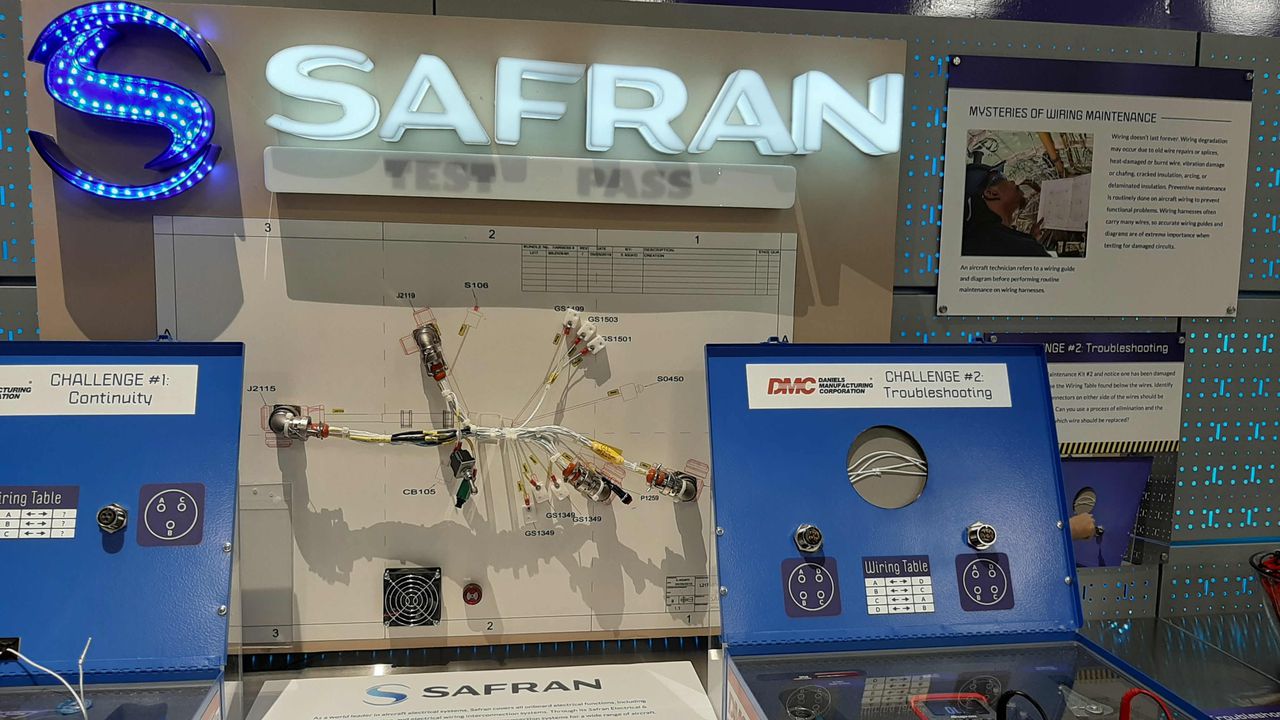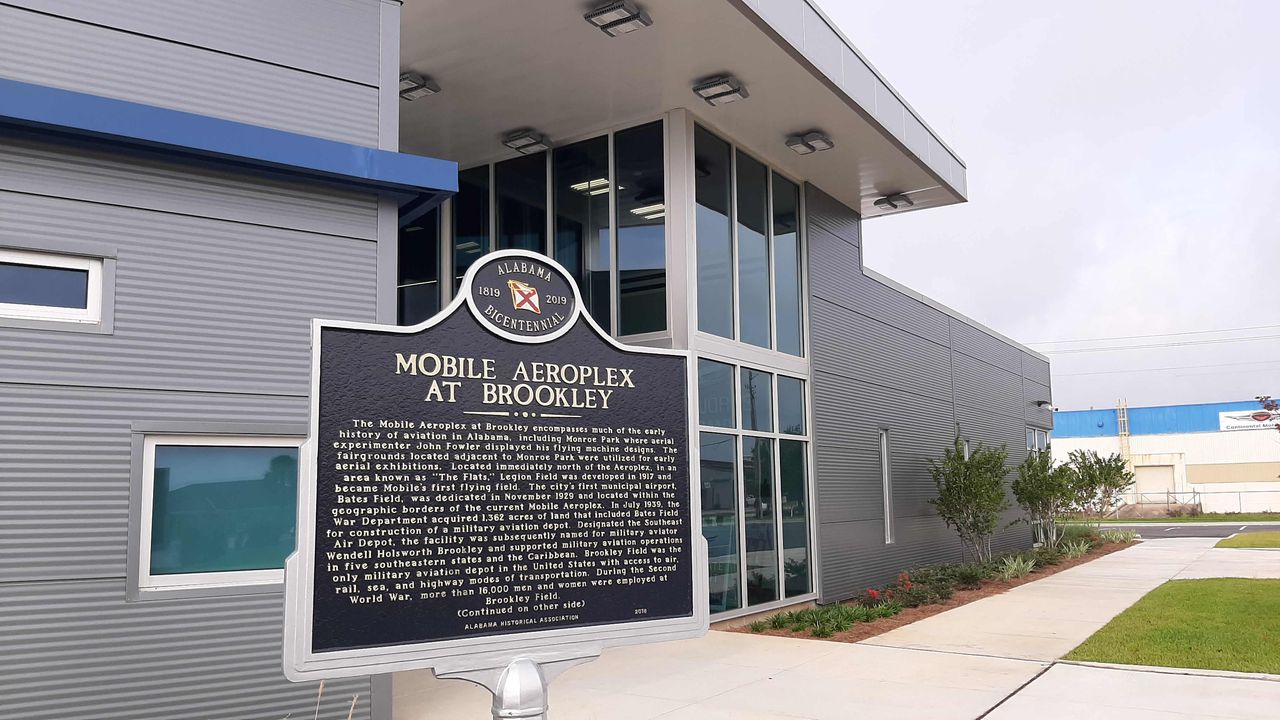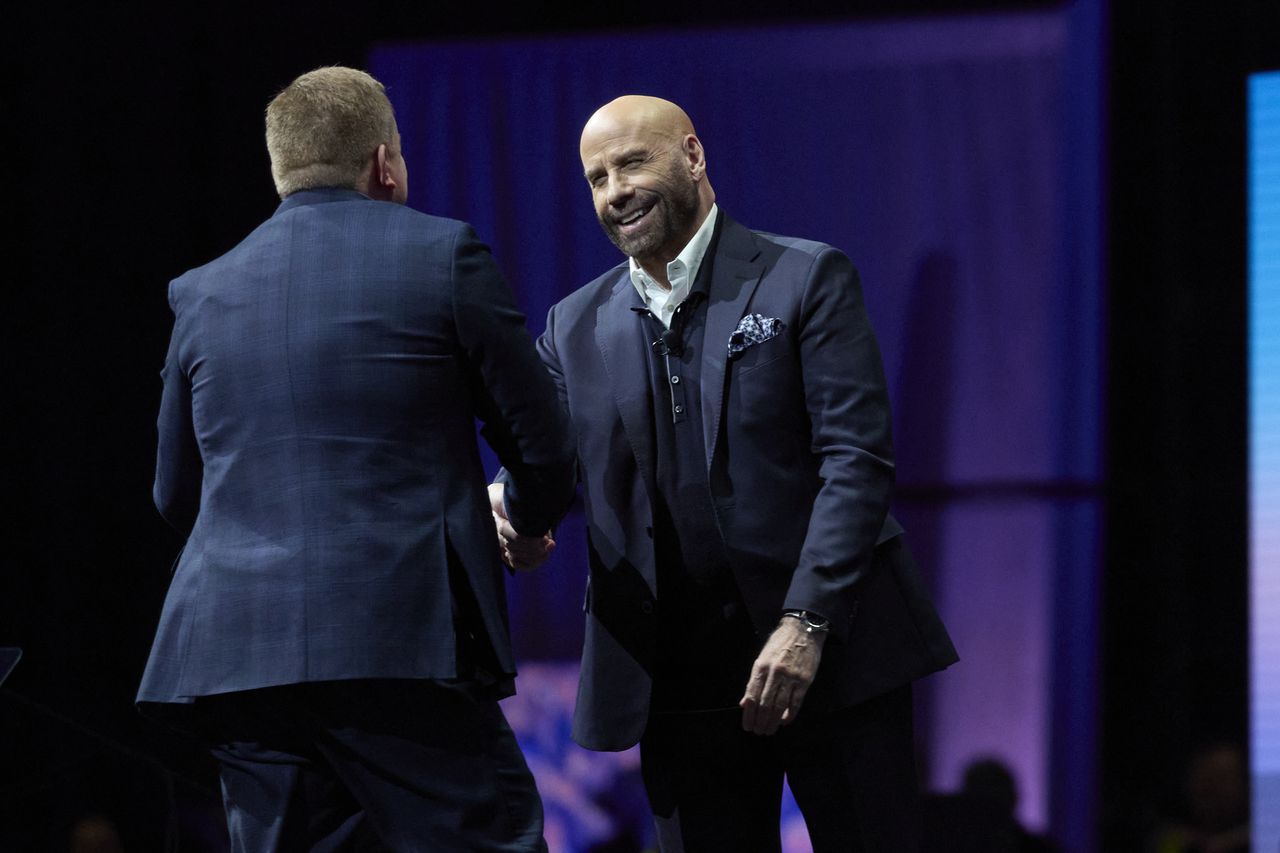When will Airbus truly transform Mobile?
Airbus was celebrated earlier this month in Mobile, marking almost a decade since construction began on the European company’s first final assembly line in North America.
But back in 2012 and 2013, the hype was underway by local officials: Airbus, in its quest to go toe-to-toe in Boeing’s backyard, was going to have a transformative impact on the Mobile region, they said.
Suppliers would flock to the city, officials also said, to support a plant that would build Airbus’ popular A320-series of single-aisle commercial aircraft.
Restaurants, shops, and subdivisions would pop up to support all the new residents around the Brookley Aeroplex industrial complex where Airbus is located.
Ten years later, have those promises materialized?
“It hasn’t quite gotten to that point yet,” said Bradley Byrne, the former congressman and president & CEO of the Mobile Chamber. “But when you have three (assembly) lines of aircraft cranking out that many airplanes, it will transform Brookley. No question about it. And when they attract these other companies (suppliers), that’s when you will see the real transformation happen.”
State and local officials say Airbus has transformed Mobile in ways that go beyond jobs, which are at around 1,800 direct jobs right now. As Mobile Mayor Sandy Stimpson said recently, “(Airbus) changed the image of our city. When they tie us to building airplanes here, it just changes the perception of what goes on in Mobile.”
Seattle area impact
Compared to some of the nation’s largest cities with significant aerospace presence, Mobile has some work to do.
And Boeing – Airbus’ chief competitor – looms large as evidence that its manufacturing presence has redefined the cities where they are located.
It’s not unusual for world leaders and presidents to visit the Boeing sites to observe the company’s production of American-made aircraft, something that has not happened in Mobile.
Boeing, of course, has had a century-long presence in Washington State where it remains a top economic engine. By the end of 2022, more than 60,200 people were directly employed to the company’s operations within the state. That figure doesn’t include the numbers tied to indirect suppliers. That accounts to approximately one-third of Boeing’s global head count.
The massive impact in Seattle spreads even wider beyond the walls of Boeing’s operations, making the business a transformative element in the nation’s 18th largest city and surrounding areas.
“In the Seattle area and the Puget Sound, there are hundreds of thousands of businesses that are suppliers of Boeing,” said Mike Lombardi, senior corporate historian for Boeing Corp. “The coffee shops, cafes, barber shops, corner grocery stores that pop up to support those employees. There is generally a 3:1 ratio, in that for every Boeing employee, three others in the community work directly because of Boeing being in the community. There is that benefit.”
In Everett, a city of around 111,000 residents 25 miles north of Seattle, the construction of Boeing’s massive manufacturing plant for the famed 747 in 1967, fueled a partnership that continues to dominate the city’s fabric.
Boeing Commercial Airplanes CEO Stan Deal, left, shakes actor John Travolta’s hand on stage during a ceremony for the delivery of the final Boeing 747 jumbo jet, Tuesday, Jan. 31, 2023, in Everett, Wash. Since it debuted in 1969, the 747 has served as a cargo plane, a commercial aircraft capable of carrying nearly 500 passengers, and the Air Force One presidential aircraft. (AP Photo/John Froschauer)AP
“That community in Everett, they realized that Boeing is No. 1 for them,” said Mike Lombardi, senior corporate historian for Boeing Corp. “It’s brought their community into a worldwide focus. We have presidents and world leaders visiting that site.”
Actor John Travolta showed up in Everett earlier this year to honor the legacy of the 747 airplane on the date of that last plane’s delivery to its final customer.
“Those people realize they would never go to Everett without Boeing being there,” Lombardi said.
South Carolina growth
The impact of Boeing’s operations spreads beyond Washington. The company’s presence in South Carolina draws the closest comparisons with Mobile, where both Southeastern cities continue to expand their manufacturing reaches through aerospace.
Boeing’s North Charleston final assembly plant opened in 2011, churning out the 787 Dreamliner. By 2020, the company consolidated its entire Dreamliner operations in South Carolina, and thousands of jobs have followed.
Since 2010, more than 6,400 employees in the Charleston metropolitan region have been attributed directly to Boeing. In comparison, Airbus – with its two final assembly lines in Mobile, first delivering airplanes in 2016 – is at around 1,800.
The third Airbus assembly line under construction in Mobile is expected to add an additional 1,000 employees.
In South Carolina, officials are adamant about how the company’s presence has helped redefine a coastal city that continues to grow into an international tourism destination popular for its scenic “old South” ambiance and charm.
“There is no question Boeing’s arrival here is transformative and was a major win for South Carolina,” said Joseph Von Nessen, research economist at the Darla Moore School of Business at the University of South Carolina.
The impact the company has made on South Carolina is noted in the hundreds of aerospace suppliers that have located to the state – equipment manufacturers and aviation-based companies tied to Boeing. And because of South Carolina’s geography, the company’s reach has been felt statewide.
Supply chain

Airbus isn’t the only aerospace company to be featured in Flight Works Alabama. Safran, which also has a presence in the Mobile area, is among others featured in exhibits.Lawrence Specker | [email protected]
It’s a different story in Mobile, where suppliers have been slower to arrive even as Alabama groups continue to trek across the globe to the annual Air Shows in Paris in hopes of attracting prospective companies to Mobile.
Suppliers are still coming to support the Airbus operations, and officials say more will join them. According to the Mobile Chamber, 35 aerospace companies are in Mobile, 18 of them arriving after Airbus first announced they were building a final assembly line for the A320-series of planes in 2012.
The more recent additions occurred in 2021 with the arrival of Montreal-based Luxia, which makes the carpet and flooring for the A220 planes built in Mobile. Daher Aerospace Inc. – an aerospace logistics provider – also located near the Airbus plant in 2021.
Some longtime existing aerospace companies, closely tied to Airbus, are expanding. Collins Aerospace in Foley dedicated an 80,000-square-foot expansion in 2017 that is devoted to providing components to support the Airbus A320neo program also supported in Mobile. Hundreds of jobs have since been added, and the company now employs over 1,100 people. It’s unclear how many jobs tied in with Airbus suppliers are in coastal Alabama.
“We’re talking to a large number of suppliers,” Byrne said. “I think this is a key moment where we’ve broken ground on a third (final assembly line) and it puts us much closer to where we have that increased level of production out there (at the Airbus facilities in the Brookley Aeroplex).”
The 350,000-square-foot third final assembly line for Airbus is expected to be operational in Mobile by 2025. The company’s second assembly line in Mobile opened in 2020 and is dedicated toward building the A220 single-aisle planes.
“As we do get closer to the end of 2025, you’ll see some announcements from suppliers,” Byrne said.
Daryl Taylor, vice-president of commercial operations with Airbus USA, said he anticipates more suppliers coming as Airbus continues to grow. The Mobile facility will be the company’s third-largest manufacturing hub after the third final assembly plant is open and operational, trailing only Toulouse, France, and Hamberg, Germany.
“Certainly, with these expansions and as the supply chain gets tighter, we expect additional suppliers to come as the final assembly lines push out more planes,” said State Senator Chris Elliott, R-Josephine. “It’s necessary for those suppliers to locate closer to the final assembly line.”
Education

A historical marker outside the entrance to Flight Works Alabama explains the significance of the Mobile Aeroplex at Brookley.Lawrence Specker | [email protected]
Education will also play a role in how vast Airbus’ reach will eventually become in Mobile.
For Boeing, the company’s focus on K-12 education since the 1980s, has helped bolster its presence in the communities where it operates, Lombardi said.
“We needed to get into the K-12 schools,” he said. “To run a business right, and we learned this decades ago, you need to be part of the community. It’s one of the things that differentiates us from our competition in that Boeing has that longtime culture and corporate spirit of … giving back to the community.”
Effort is afoot in Alabama to boost educational programs key to supporting Airbus.
FlightWorks Alabama and Airbus recently teamed up to provide science, tech, engineering, art and math programs to elementary school students in Mobile and Baldwin counties. FlightWorks has its buildings located within a short walking distance of the Airbus manufacturing plant.
Baldwin County Schools is also in the process of building an $92 million career tech school that will help support area companies like Airbus. Bishop State Community College recently opened a $30 million center dedicated to advanced manufacturing training and technology to provide workers to Airbus, among other manufacturers within the city.
Mobile needs a manufacturing workforce, and officials are fretting over a lack of trained workers in the region as demand for the jobs increase.
Manufacturing represents about 8% of the city’s workforce, and it’s growing. The average annual salary for a manufacturing career is $84,000.
In Alabama, AIDT – the state’s primary workforce development agency – participates in assisting Airbus in filling new positions.
“You continue to see more folks move to Mobile and Baldwin counties for those high-paying advance manufacturing jobs and administrative white collar jobs,” Elliott said. “The sky is not the limit is what we keep saying.”
Future developments

Signs of a major ongoing expansion project were easy to spot at Airbus’ manufacturing campus in Mobile on Oct. 18, 2023.Lawrence Specker | [email protected]
Other large-scale developments are aimed at supporting Airbus and its growth.
Officials believe Airbus, as well as industries throughout the region, will benefit from the state’s port improvement project. The $365.7 million project includes a deepening and widening the Mobile ship channel. That project is expected to be completed in 2025, around the same time that Airbus opens its third final assembly plant. The project is financed, in part, through a portion of the state’s fuel tax increase authorized by the Legislature in 2019.
Nearby the Airbus plant is the future home to a new $330 million Mobile International Airport, also opening in 2025. The five-gate terminal will represent a complete swap of commercial aviation services from the Mobile Regional Airport in the far western edges of the city to the Brookley area that is Ground Zero for the city’s aerospace activity.
“I think in the next five to 10 years, this area will be changed tremendously,” said Chris Curry, president of the Mobile Airport Authority. “I think we’ll grow in all aspects of development in both commercial service, cargo and with the economic development that comes with Airbus and other supply chain providers.”
Airbus and Mobile could get a boost if the European company can win a coveted U.S. Air Force contract to build 75 refueling tankers. A recent decision by Lockheed Martin to remove itself from consideration to assist Airbus in the project was viewed this week as a setback for the company’s efforts. But Airbus, along with Alabama state leaders including Gov. Kay Ivey, are confident in the company’s MRTT tanker that is flown by the armed forces of several nations including France and Spain.
Airbus is competing with Boeing, which is touting their KC-46A as the only tanker that meets the Air Force’s requirements.
If Airbus lands the contract, it would likely mean hundreds – if not more than 1,000 – additional jobs, and a fourth assembly plant, built in Mobile.
“Even if they don’t (win the tanker contract), they will probably end up building a fourth assembly line,” Curry said.
Taylor said there is a backlog of 6,000 A320 planes on order, many of which are churning through the manufacturing operations in Mobile and will continue to be built in the third final assembly plant.
The demand is soaring at a time when Airbus continues to outpace Boeing for deliveries, now four years running and in the aftermath of the grounding of the 737 Max in 2019, following deadly crashes of the airline in 2018 and 2019.
Asked if he could predict the construction of a fourth plant, Taylor said he wasn’t sure but added, “I think when you look back at where we were five years ago, we’d probably not predict a second program here. A year and a half ago, we would not have predicted a second FAL for the 320 and to be at this.”
